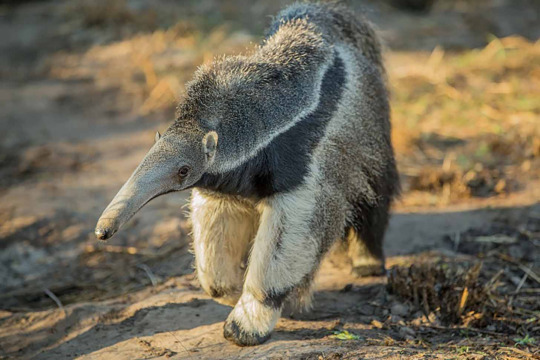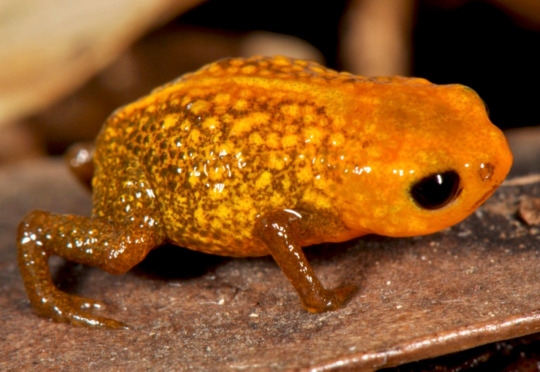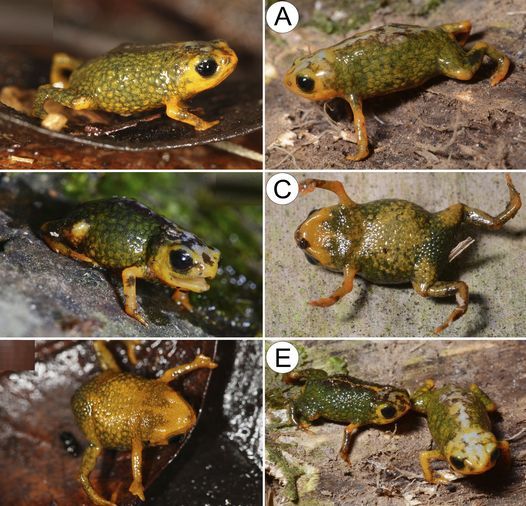#State of Santa Catarina
Explore tagged Tumblr posts
Text
LOS ANGELES LAKERS X ATLANTA HAWKS | (NARRAÇÃO AO VIVO) | TEMPORADA REGULAR 2024/25

Full Watch Here https://sfl.gl/8C1Llkk
#Federal District#State of Acre#State of Alagoas#State of Amapá#State of Amazonas#State of Bahia#State of Ceará#State of Espírito Santo#State of Goiás#State of Maranhão#State of Mato Grosso#State of Mato Grosso do Sul#State of Minas Gerais#State of Pará#State of Paraíba#State of Paraná#State of Pernambuco#State of Piauí#State of Rio de Janeiro#State of Rio Grande do Norte#State of Rio Grande do Sul#State of Rondônia#State of Roraima#State of Santa Catarina#State of São Paulo#State of Sergipe#State of Tocantins#LakersVsHawks#NBA2025#LiveGame
0 notes
Text

not saintly unlike her name suggests (santa catarina)
#statehumans#statehumans santa catarina#the name on the drawing itself would be her human name#maybe I’ll make more brazilian states but not sure at the moment#I just really wanted to draw SC
15 notes
·
View notes
Text

Traders travelling int he Santa Catarina state of Brazil
French vintage postcard
#postal#santa#historic#brazil#french#ansichtskarte#catarina#state#travelling#sepia#vintage#tarjeta#briefkaart#santa catarina#photo#postkaart#ephemera#postcard#postkarte#photography#traders#carte postale
5 notes
·
View notes
Text
— Recent giant anteater sightings in Rio Grande do Sul state indicate the species has returned to southern Brazil, where it had been considered extinct for more than a century.
— Experts concluded that the giant anteater ventured across the border from the Iberá Park in northeastern Argentina where a rewilding project has released around 110 individuals back into the habitat.
— The sightings emphasize the importance of rewilding projects, both to restore animal populations in specific regions and help ecosystems farther afield.
— Organizations across Brazil are working to protect and maintain current giant anteater populations, including rallying for safer highways to prevent wildlife-vehicle collisions that cause local extinctions.
Playing back hours of footage from a camera trap set in Espinilho State Park in the south of Brazil in August 2023, Fábio Mazim and his team banked on possible sightings of the maned wolf or the Pantanal deer and had their fingers crossed for a glimpse of a Pampas cat (Leopardus pajeros), one of the most threatened felines in the world.
What they didn’t expect to see was an animal long presumed extinct in the region. To their surprise, the unmistakable long snout and bushy tail of a giant anteater ambled into shot.
"We shouted and cried when we saw it,” the ecologist from the nonprofit Pró-Carnívoros Institute told Mongabay. “It took a few days to grasp the importance of this record. A sighting of a giant anteater was never, ever expected.”
Last seen alive in the southwest of the Rio Grande do Sul state in 1890, the giant anteater (Myrmecophaga tridactyla) has since been spotted 11 times since August 2023, although the scientists are unsure whether it’s the same one or different individuals. However, the sightings confirm one clear fact: The giant anteater is back.
It's a huge win for the environment. Giant anteaters play an important role in their ecosystems, helping to control insect numbers, create watering holes through digging and are prey for big cats such as jaguars and pumas.
The habitat of the giant anteater stretches from Central America toward the south cone of Latin America.
Its conservation status is “vulnerable,” although it is considered extinct in several countries, including El Salvador, Guatemala and Uruguay, as well as specific regions such as the states of Rio de Janeiro, Espirito Santo, Santa Catarina and (until now) Rio Grande do Sul in Brazil and the Cordoba and Entre Rios regions in Argentina.
In the last six months, the giant anteater was spotted on camera 11 times in the Espinilho State Park in the state of Rio Grande do Sul in Brazil. It was the first time in 130 years that the species has been seen alive there.
Yet not only is it a triumph for conservationists to see these animals returning to Brazilian biomes, it’s also a surprising mark of success for a rewilding program about 150 kilometers (93 miles) away in neighboring Argentina.

Rewilding Argentina’s biomes
Iberá National Park in Corrientes province in northeastern Argentina is a 758,000-hectare (1.9 million-acre) expanse of protected land comprising a part of the Iberá wetlands with its swaths of grasslands, marshes, lagoons and forests. The region was once home to just a handful of giant anteaters after habitat loss, hunting and vehicle collisions decimated the population.
Since 2007, the NGO Rewilding Argentina, an offspring of the nonprofit Tompkins Conservation, has been reintroducing the species back to the area, most individuals being orphaned pups rescued from vehicle collisions or poaching.
So far, they have released 110 giant anteaters back into the wild. Nowadays, several generations inhabit the park, transforming it from “a place of massive defaunation to abundance,” Sebastián Di Martino, director of conservation for Rewilding Argentina, was quoted as saying in an official statement.
The project has been so successful that the giant anteaters appear to be venturing farther afield and moving to new territories beyond national borders, such as Espinilho State Park in Brazil’s Rio Grande do Sul region...
Experts now hope that a giant anteater population can reestablish itself naturally in Espinilho State Park without the need for human intervention.
“The giant anteater returning to Rio Grande do Sul shows the success of the work done in Argentina and how it’s viable, possible and important to do rewilding and fauna reintroduction projects,” Mazim said. “It is also an indication that the management of conservation units and also the agricultural areas of the ecosystems are working,” he added. “Because if large mammals are coming from one region and settling in another, it is because there is a support capacity for them. It is an indication of the health of the environment.”
-via GoodGoodGood, via May 25, 2024
#anteater#giant anteater#brazil#brasil#argentina#rewilding#conservation#conversation news#nature#biodiversity#environment#ecosystem#ecology#good news#hope
611 notes
·
View notes
Text
Brazil's Lula recognizes three more Indigenous territories

Brazilian President Luiz Inacio Lula da Silva officially recognized three more Indigenous territories on Wednesday, pushing to 13 the number of lands to which he has granted legal protection since his latest term began in early 2023.
Lula signed the state recognition of the Potiguara de Monte-Mor land, in the northeastern Paraiba state, as well as the Morro dos Cavalos and Toldo Imbu lands, both in the southern state of Santa Catarina, a government statement said.
The recognition grants the territories legal protection as reservations to be defended against encroachment by illegal loggers, gold miners and cattle ranchers.
Lula had signed off on giving two other territories legal protection in April, while postponing recognition for four more as they still needed to be cleared by people currently occupying them.
Continue reading.
#brazil#brazilian politics#politics#environmentalism#good news#indigenous rights#luiz inacio lula da silva#image description in alt#mod nise da silveira
111 notes
·
View notes
Text
Today I learned that Raimundo's hometown ISN'T Rio de Janeiro at all. Apparently his hometown is Tubarão, as he mentions in the episode "The Last Temptation of Raimundo".
Transcript: "Volcano in Brazil. That's Tubarão, my hometown!"
It's also mentioned on Raimundo's wiki page as well:

Just so you know, Tubarão is a real city in Brazil that's located in Santa Catarina, a state in the country. For reference, this is how far Tubarão is from Rio de Janeiro:

Whether the show depicted Raimundo's town accurately or not, I can't say for certain because I've never been to Tubarão before (let alone the entirety of Brazil). The one thing that I do know is that the city is located next to a river. And the episode did show his hometown next to one so there's that.

I'll be completely honest as I say, Tom Kenny did NOT do a good job pronouncing that name at all. I genuinely thought Raimundo said "tuber Rio", like he's saying "my cool and awesome Rio!" *head in hands*
89 notes
·
View notes
Text










Sea Front Apartment,
Balneário Camboriu, State of Santa Catarina, Brazil,
Courtesy: Simara Melo Arquitetura,
Photography: Eduardo Macarios
#art#design#architecture#minimalism#interior#interiors#luxury house#luxury home#condo#residential#brazil#santa catalina#balneario camboriu#sea front#apartment#simara melo
59 notes
·
View notes
Text
Climate change is undeniable
Brazil's southernmost state, Rio Grande do Sul, is going through the worst flood of its history. Almost half the state is underwater, including state capital Porto Alegre. There are pictures in news sites that are absolutely terrifying. I have seen videos of at least five different bridges being carried out the the water in the past four days only.
Rio Grande do Sul underwent a big flood last September, and it was already incredibly frightening. There were storms in June and November too, but September was bigger. And this current storm has been lasting longer already. Things are likely to get worse in the next week - weather forecast says rain will give the state a break starting tomorrow, May 5th, but by the 8th it should be raining again.
The pictures explain better than my words can:
youtube





But if Rio Grande do Sul and its neighboring state Santa Catarina have been facing massive floods, the rest of the country is going through the fourth heat wave of 2024 (they consider a heat wave when the weather is over 5° C above the average temperature, for several days). Now, you must be thinking: Brazil is a tropical country, it's supposed to be hot.
It's not supposed to be 37° C in fucking May.
We have a state in the southern region, called Paraná, whose capital city, Curitiba, is the coldest state capital in Brazil. In fact, there is a stereotype (very much confirmed) that Curitibans are insufferable when it comes to talking about the weather, because no Brazilian, in any place of the internet, talking from anywhere in Brazil, can complain about the cold without a Curitiban showing up from nowhere and saying "well, but here in Curitiba is colder". They really are that insufferable.
Curitiba's average temperature for May is 12° C to 21° C. I just checked: it's 28° C right now. Curitibans have taken to forums to complain about the heat, which must be unheard of, because those assholes (I love you guys, but you're assholes) can't stop talking about the cold all damn year. I have never, in 40 years of life, have seen them talking about the heat so much.
When I was a kid, i used to wear coats for some periods of the year. Rio has never been a place to wear heavy coats, but you know, long-sleeved shirts, a denim jacket during the winter? Normal.
I can't remember the last time I consistently wore a jacket. It was probably before the pandemic, and only because of the air-conditioner at work. It just isn't cold enough to wear anything more than short sleeves for more than three or four days in the entire year.
Climate changes are undeniable. Anyone who's denying it is either incredibly stupid or incredibly ill-intentioned.
102 notes
·
View notes
Text

Saddleback Toad (Brachycephalus auroguttatus), family Brachycephalidae, endemic to Brazil
Micro-endemic to the a cloud forest in the Pedra da Tartaruga, a rocky formation in the State of Santa Catarina, Brazill
The toads in this genus are so tiny, they are also called "Flea Toads".
photograph via: Ribeiro LF, Bornschein MR, Belmonte-Lopes R, Firkowski CR, Morato SAA, Pie MR https://peerj.com/articles/1011/
#saddleback toad#brachycephalus#brachycephalidae#toad#frog#amphibian#herpetology#south america#animals#nature
116 notes
·
View notes
Text

A little buddy i found at my grandparents house, this is Cycloneda sanguinea lady beetle also commenly known as spotless lady beetle, is a species native to latin america that is great for protecting corps against aphids.
Location found Brazil, state of Santa Catarina.
#insects#lady beetles#ladybirds#ladybug#brazil#tumblr brasil#ladybugs#lady bird#lady beetle#insectblr
9 notes
·
View notes
Text
USAmericans didn't "ruin" the Miku trend because we're doing them by state, nobody is stopping you from drawing Miku specific to your own region or state from your own country. This is the absolute most nothingburger issue in existence, you could just draw a Santa Catarina-specific Miku, if you wanted. Absolutely no one forced you to draw generic-Brazilian Miku, get fucking specific with it if that's what you really desire
#I just don't get making “americans have no culture” thinkpieces over a fucking hatsune miku art trend actually#also if americans were drawing fucking fourth of july us flag miku you'd be just as upset so really you need to stop giving a fuck#you don't care about americans? that's crazy because you sure seem to think about us nonstop#we're not asking you to care. you can just stop caring.
7 notes
·
View notes
Text

A new species of Saddleback Toad - Brachycephalus (Anura: Brachycephalidae) from Serra do Tabuleiro, Southern Brazil
Sarah Mângia, Diego José Santana, Leandro de Oliveira Drummond, Leandro Talione Sabagh, Luiz Ugioni, Paulo Nogueira Costa, Milena Wachlevski
The number of described species of Brachycephalus has rapidly increased in the last decade (n = 22, which represents 56% of the total). Species of the genus Brachycephalus are mostly distributed in isolated mountaintops from Bahia (northeastern Brazil) to Santa Catarina states (southern Brazil), each one occupying only one or a few adjacent mountaintops. Herein, we described a new species of Brachycephalus of the B. pernix group, from Serra do Tabuleiro in Santa Catarina state, which also represents the southernmost known species...
Read the paper here:
A new species of Brachycephalus (Anura: Brachycephalidae) from Serra do Tabuleiro, Southern Brazil (arphahub.com)
50 notes
·
View notes
Text
Great women in paleontology: Diana Mussa | Grandes mulheres na paleontologia: Diana Mussa

🇬🇧 Diana Mussa, born in Campos dos Goytacazes on January 19, 1932, and passed away in Rio de Janeiro on May 8, 2007, was a renowned Brazilian geologist and paleobotanist, globally recognized for her expertise in Devonian flora. She was a trailblazer in this field in Brazil and also a respected professor at the Federal University of Rio de Janeiro.
The youngest of five siblings, Diana was the daughter of Lebanese parents. Since childhood, she harbored the dream of becoming a naturalist, driven by her deep interest in nature and natural processes. In 1952, she moved to Rio de Janeiro to study Natural History at the National Faculty of Philosophy, Sciences, and Letters of the University of Brazil (now UFRJ), where she also pursued Geology. During this time, she had the opportunity to intern under renowned researchers such as Dr. Fernando R. Milanez at the Rio de Janeiro Botanical Garden and Dr. Calvino Mainieri at the São Paulo Institute of Technological Research.
In the late 1950s, she joined the Convent of the Poor Clares to volunteer with underserved populations, and she was sent to Manaus. Between 1958 and 1961, she lived in Tefé, conducting research on fossilized woods and participating in missionary activities. After returning to Rio de Janeiro for health treatment, she joined the National Commission of Nuclear Energy and commenced her postgraduate studies in 1973 at the Institute of Geosciences of the University of São Paulo, under the guidance of Prof. Dr. Antonio Carlos Rocha-Campos. Her thesis, defended in 1982, on the Permian Lignitafofloras of the Paraná Basin, Brazil (States of São Paulo and Santa Catarina), was approved with distinction.
Diana became a researcher at the National Department of Mineral Production and later worked at the National Museum in Rio de Janeiro, where she became an Adjunct Professor of Paleobotany in 1993. Throughout her career, she described approximately 30 genera of fossilized plants, leaving behind an important legacy in the form of her collection of fossil wood slides. Additionally, she was a founding member of the Brazilian Society of Paleontology and a member of various other international and national organizations in her field. Her name inspired the naming of the genus Mussaeoxylon seclusum Merlotti 1998, for Gondwanan fossil gymnosperm wood from Brazil, and the species Glossopteris mussae Ricardi-Branco et al. 1999, for new Permian fossil leaves from São Paulo.
🇧🇷 Diana Mussa, nascida em Campos dos Goytacazes em 19 de janeiro de 1932 e falecida no Rio de Janeiro em 8 de maio de 2007, foi uma renomada geóloga e paleobotânica brasileira, reconhecida mundialmente por sua expertise na flora do devoniano. Ela foi a pioneira nesse campo no Brasil e também uma respeitada professora na Universidade Federal do Rio de Janeiro.
Filha de pais libaneses, Diana era a caçula de cinco irmãos. Desde a infância, cultivava o sonho de se tornar naturalista, devido ao seu profundo interesse na natureza e nos processos naturais. Em 1952, mudou-se para o Rio de Janeiro para estudar História Natural na Faculdade Nacional de Filosofia, Ciências e Letras da Universidade do Brasil (atual UFRJ), onde também cursou Geologia. Durante esse período, teve a oportunidade de estagiar com renomados pesquisadores, como o Dr. Fernando R. Milanez no Jardim Botânico do Rio de Janeiro e o Dr. Calvino Mainieri no Instituto de Pesquisas Tecnológicas de São Paulo.
No final dos anos 1950, ingressou no Convento das Clarissas para realizar trabalho voluntário com populações carentes, sendo enviada para Manaus. Entre 1958 e 1961, viveu em Tefé, onde conduziu pesquisas sobre madeiras fósseis, além de participar de atividades missionárias. Após retornar ao Rio de Janeiro para tratamento de saúde, ingressou na Comissão Nacional de Energia Nuclear e iniciou sua pós-graduação em 1973 no Instituto de Geociências da Universidade de São Paulo, sob a orientação do Prof. Dr. Antonio Carlos Rocha-Campos. Sua tese, defendida em 1982, sobre as Lignitafofloras Permianas da Bacia do Paraná, Brasil (Estados de São Paulo e Santa Catarina), foi aprovada com distinção.
Diana tornou-se pesquisadora do Departamento Nacional de Produção Mineral e, mais tarde, passou a trabalhar no Museu Nacional, no Rio de Janeiro, onde se tornou Professora Adjunta de Paleobotânica em 1993. Ao longo de sua carreira, descreveu aproximadamente 30 gêneros de vegetais fósseis, deixando um legado importante na forma de sua coleção de lâminas de lenhos fósseis. Além disso, foi sócia-fundadora da Sociedade Brasileira de Paleontologia e membro de diversas outras organizações internacionais e nacionais ligadas à sua área de atuação. Seu nome inspirou o batismo do gênero Mussaeoxylon seclusum Merlotti 1998, para madeira fóssil gimnospérmica do Gondwana brasileiro, e da espécie Glossopteris mussae Ricardi-Branco et al. 1999, para novas folhas fósseis do Permiano de São Paulo.
#science#paleontology#geology#universe#earth#paleobotany#biology#Diana Mussa#paleontologia brasileira#paleozóico#paleobotânica#paleozoic#paleontologia#women in science#women in paleontology
8 notes
·
View notes
Text

Tom Veiga. Praia da Ibiraquera em Imbituba. Ibiraquera beach in Imbituba*.
Том Вейга. Пляж Ибиракера в Имбитубе**.
* municipality in Brazil, part of the state of Santa Catarina
** муниципалитет в Бразилии, входит в штат Санта-Катарина
3 notes
·
View notes
Text
Brazil’s ban on X: how scientists are coping with the cutoff
Some are pivoting to alternative social-media platforms and scrambling to rebuild their networks.

After the social-media platform X was banned in Brazil last week, scientists in the country began scrambling to find another online forum for posting about their research, communicating with collaborators and staying abreast of scientific advances. “Following journals and key people always kept me on top of things,” says Regina Rodrigues, a physical oceanographer at the Federal University of Santa Catarina in Florianópolis, Brazil.
Some feel isolated because of the change. “I’ve lost contact with colleagues and European research groups I joined during my postdoc in Spain,” says Rodrigo Cunha, a communications researcher at the Federal University of Pernambuco in Recife, Brazil.
Others are more sanguine, pointing out that many researchers had already left X (formerly Twitter) after billionaire Elon Musk bought it and changed its policies, including those related to content moderation and how users could be ‘verified’, or deemed an authoritative source of information. Sabine Righetti, a science-communications researcher at the State University of Campinas in Brazil, exited the platform early last year owing to what she perceived as an increase in aggressive messages, especially targeting scientists, journalists and women. “I am these three things,” she says.
Ronaldo Lemos, chief scientist at the Institute for Technology and Society in Rio de Janeiro, says the ban might offer a glimpse of what the world would be like without X. Social networks come and go, he says, pointing to some that have shut down, such as Google’s Orkut, which closed in 2014 and was once popular in Brazil. “People adapt and look for ways to reconstruct their networks in other places," he says.
Continue reading.
#brazil#brazilian politics#politics#twitter#science#elon musk#alexandre de moraes#supreme federal court#image description in alt#mod nise da silveira
54 notes
·
View notes
Text
Brazil Cracks Down on Surprising New Threat: Neo-Nazis - The New York Times (nytimes.com)
By Julia Vargas Jones
Reporting from Nova Petrópolis, Brazil
Nov. 7, 2023
By Julia Vargas Jones
Reporting from Nova Petrópolis, Brazil
Nov. 7, 2023
Leer en español
In southern Brazil in July, Laureano Toscani and João Guilherme Correa were smoking cigarettes along a busy road in their prison-issued garb, shorts and sandals, waiting for a ride after seven months in jail.
Mr. Toscani was once convicted of stabbing a group of Jewish men, and Mr. Correa has been accused of murdering a couple leaving a party. But this time, they were behind bars for attending what they said was a harmless barbecue.
The Brazilian authorities, however, say it was something far more sinister: a meeting of the Hammerskins, a neo-Nazi group founded in Dallas in 1988 that they say has recently found its way thousands of miles south, to Brazil’s most starkly conservative region, reflecting a surge in far-right extremists in Latin America’s largest nation.
In September 2022, the state police in Santa Catarina began trailing the Hammerskins as members strategized on how to attract new recruits.
Two months later, as eight men met at a farmhouse outside the coastal city of Florianópolis, a police hate-crimes unit burst in, arresting everyone under anti-discrimination laws and accusing them of being members of the Hammerskins. Two other accused members were arrested weeks later.
On the members’ phones, the police said, they found antisemitic and racist content, including a message that one had sent in a group chat saying that “Black people need to die every day.” The police said they believed the group was aided by at least two American Hammerskin members who had traveled to Brazil several times.
The raid was part of a larger crackdown on neo-Nazi groups amid a rise in extremist movements and sentiments in Brazil that has spurred a greater number of school shootings and stabbing attacks, including at least 11 this year.
In February, a 17-year-old boy wearing a swastika armband was accused of throwing two homemade explosive devices into a school, but no one was injured.
In March, authorities said a 13-year-old boy fatally stabbed a teacher while wearing a skull mask commonly worn by an American neo-Nazi group.
And last month, a 16-year-old boy was accused of firing at a school, killing a classmate and wounding two others. Another student was injured trying to escape. The teenager had previously posted a photo of a swastika drawn on his face, the authorities said. In the three cases, which all occurred in or around São Paulo, the authorities arrested the boys.
The authorities say they have thwarted hundreds of other attacks.
Many of the attacks did not target Jewish people specifically. Brazil has roughly 100,000 people who identify as Jewish, according to estimates, or just one in every 2,000 people.
But researchers believe that those who have carried out or planned such attacks often turn violent after consuming extremist or neo-Nazi content online that frequently exhorts violence against any person who is not white.
In April, Brazil’s new justice minister, Flávio Dino, ordered the federal police to investigate what he called the growth of “hate and intolerant speech by neo-Nazi, neo-fascist and extremist groups.”
“If you mention Nazism, neo-Nazism, threaten a school or say you will attack a school, we will call for your arrest,” Mr. Dino added.
Brazil’s federal police have opened 21 investigations involving neo-Nazis so far this year, the same amount as in the three prior years combined.
Data on the size of Brazil’s neo-Nazi movement is sparse, but most researchers agree that it has been growing. One researcher tracking neo-Nazi groups, Adriana Dias, an anthropologist at the State University of Campinas, estimated that the number of groups increased from the hundreds in 2019 to more than 1,000 last year.
SaferNet, an organization that helps the Brazilian government combat online crime, has been collecting reports of neo-Nazi activity online since 2017, when it recorded almost 1,200 complaints. By 2021, complaints had grown to nearly 14,500, but they have since fallen as neo-Nazi groups have increasingly migrated to private-messaging platforms, researchers said. Still, there were 945 complaints in the first half of this year.
Antisemitic attacks have risen around the world, including in Brazil, since the war between Israel and Hamas broke out last month. Last month, the Brazilian Israelite Confederation received 467 reports of antisemitism, compared with 44 in October last year.
Some researchers linked the rise in neo-Nazi activity in Brazil to Jair Bolsonaro’s four years as president. Much like how American extremist groups gained strength during Donald J. Trump’s presidency, the Brazilian far right latched onto Mr. Bolsonaro’s inflammatory rhetoric as tacit approval of their views, researchers said.
After a state visit to Israel in 2019, Mr. Bolsonaro’s first year as president, he said that Nazis were leftists and that “we can forgive but not forget” the Holocaust, drawing criticism from his Israeli counterpart.
In 2020, Mr. Bolsonaro’s secretary of culture was forced to step down after giving a speech that was so similar to one by Joseph Goebbels, the Nazi Party’s chief propagandist, that parts seemed to have been copied.
And at a news conference in 2021, one of the former president’s aides made the “OK” hand gesture in front of cameras, a sign that has been appropriated to signify “white power” in white supremacist circles. He was charged with hate crimes, but the case was later dismissed.
The “gesture started appearing in the Brazilian far right, even among groups that do not explicitly identify as neo-Nazis,” said Odilon Caldeira Neto, a professor of contemporary history who studies the far right at the Federal University of Juiz de Fora. That, he added, helps neo-Nazi groups “get pulled into the political center.”
While the Bolsonaro administration investigated neo-Nazi groups, the issue has become a priority under the leftist president who defeated Mr. Bolsonaro last year, Luiz Inácio Lula da Silva. Raids on neo-Nazis groups have taken place in at least 10 states this year.
In July, the Brazilian police carried out a four-state operation against 15 people connected to a neo-Nazi group called the New SS of Santa Catarina, which used 3-D printers to manufacture handguns.
In one raid, the police were met with gunfire as they entered a rural home in Nova Petrópolis, a picturesque mountain town of about 20,000 people, many of whom are descendants of German immigrants.
The person firing at the police was a woman alone with her toddler and an infant. No one was injured and the police said they found two handguns, 96 rounds of ammunition and a trove of Nazi materials, including a swastika armband, German World War II memorabilia, the flag of an international neo-Nazi group and supplies to produce merchandise for a local neo-Nazi group.
The woman was arrested after firing at the police, but she was released on bail hours later.
Later that evening, belongings were still strewn at the home and the front door was busted. The woman who had been arrested said the items that the police had taken were personal belongings bought while traveling.
Many investigations have been concentrated in southern Brazil, where 73 percent of the population identifies as white, versus 43 percent nationally, and 62 percent voted for Mr. Bolsonaro last year, versus 49 percent nationally. Some researchers believe neo-Nazi groups are attracted to the region’s German history.
Before World War II, from 1928 to 1938, Brazil had the largest Nazi Party outside Germany, with 2,900 members across 17 states, according to Brazilian scholars. After the war, Brazil, like other South American nations, became a refuge for Nazis fleeing prosecution.
In 2020, the city of Porto Alegre, a southern state capital with a population of 1.5 million people, renovated a park to include an original design from the 1930s on the pavement. The design resembled a swastika, and residents complained. An investigation by the city concluded that there was no link between the design and the Nazi symbol. The design has since been vandalized.
Under Brazilian law, it is a crime to discriminate based on race, religion or nationality, as well as to display a swastika for the purpose of spreading Nazi ideology. Both crimes can lead to yearslong prison terms. All 10 people accused of being Hammerskin members have been released from jail with ankle monitors while they await court hearings.
Waiting for his ride from jail in July, Mr. Toscani said they had done nothing wrong. “They arrested us for throwing a barbecue,” he said. “You know what they found when they arrested us? A machete and a book.”
The book was “The Turner Diaries,” a classic of the extremist canon that Timothy McVeigh said inspired his bombing in 1995 of the federal building in Oklahoma City that killed 168 people.
Arthur Lopes, the chief of the Santa Catarina police hate-crimes unit, who arrested the accused Hammerskin members, said some were covered in extremist tattoos. “Everything but the swastika,” he said.
Jack Nicas contributed reporting from Rio de Janeiro.
17 notes
·
View notes